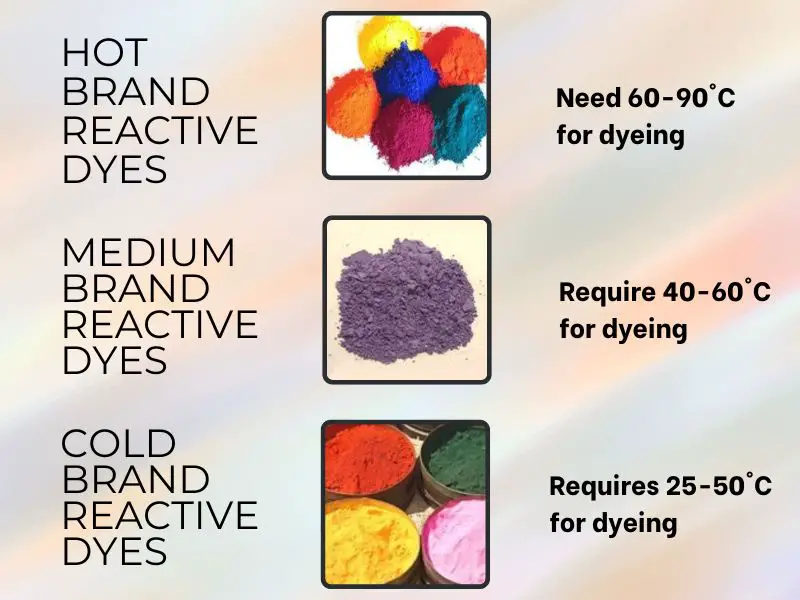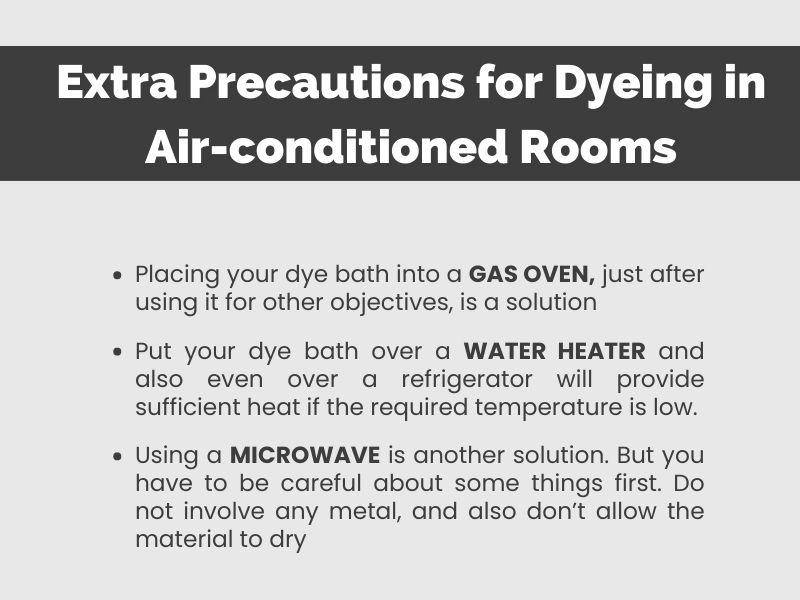Effect of Temperature on Fiber Reactive Dyes
Fiber reactive dyes possess an exciting feature, the ability to react and bond directly with the fabric, specifically cellulose and protein fibers. However, this bonding process, also known as dyeing, is significantly influenced by temperature.
The effect of temeperatue on fiber reactive dyes mainly depend on the brand of dyes you are using and some other factors.
Through detailed examination of the impact of low temperatures on reactive dyes and instructions on creating optimal environments for dyeing, we will dicuss the strategies to achieve perfect dyeing results every time.
Temperature Requirements of Fiber Reactive Dye
If we look at the classification of reactive dyes based on their reactivity, we will find three types of reactive dyes.

Hot Brand Reactive Dyes
The hot brand reactive dyes have the lowest reactivity and needed 60-90°C for dyeing. They also require strong alkali for dyeing.
Medium Brand Reactive Dyes
The medium brand reactive dyes have medium reactivity and require 40-60°C for dyeing. Mild alkali is required.
Cold Brand Reactive Dyes
And the cold brand reactive dyes have the highest reactivity and requires only 25-50°C for dyeing. The fixation requirement is the use of weak alkali.
Importance of Temperature in Reactive Dyeing Process
The speed of reaction during dyeing is heavily dependent on temperature. If you add Procion MX dyes in boiling water, dyes will start to react before coming contact with the fiber.
So, the final shade will be much paler than your requirements or expectations. That’s why mixing the dye at room temperature in water before dyeing in very important.
If the temperature is kept at 35°C after the addition of dye and soda ash, the dyeing will be finished within a couple of hours. But if the temperature is 15°C, two or three days may not be long enough for dyeing completion.
For Procion MX dyes, keep the temperature at 20°C at least during dyeing. You can use a waterproof sheet or an electric blanket for maintaining the temperature if you don’t have a heater.
Optimal Temperature Settings and Dyeing
The rate of the dyes reacting with water rather than fiber, i.e., the hydrolysis rate of Procion MX dyes, increases approximately three-fold when the temperature is increased 10°C. So, if you have to store the dye after mixing in water, keep that at 4°C in the refrigerator rather than keeping that at room temperature.
If you use dyes having less reactivity such as Drimarene K or Cibacron F, the temperature needs to be higher. The dyes require more heat for their reaction. It would be best if you tried to keep the temperature at a minimum of 27°C. You can find above the optimum temperature of different dyes based on their reactivity.
Impact of Low Temperature on Reactive Dyes
The low temperature will result in the paler shade after dyeing for reactive dyes. Now, think that you don’t have any machine or heater for increasing the temperature.
If your room temperature is 20°C or closer to that, keep the dyes (with material for dyeing) in a container overnight or maybe for 48 hours. Still, getting paler shade? Just increase the temperature slightly.
Extra Precautions for Dyeing in Air-conditioned Rooms
Now, if you are in an air-conditioned room and temperature is below the requirement, wrap the dye bath with a plastic bag or, if possible, with an electric blanket. This will solve your problem. Or place the wrapped dye bath in place of direct sunlight.

Gas Oven
Placing your dye bath into a gas oven, just after using it for other objectives, is a solution. The oven will remain warm, and if you place the dye bath inside that with a closed environment, dyeing will be carried on.
Water Heater
Another solution is to put your dye bath over a water heater and also even over a refrigerator will provide sufficient heat if the required temperature is low.
Microwave
Using a microwave is another solution. But you have to be careful about some things first. Do not involve any metal, and also don’t allow the material to dry. Otherwise, the material will burn. Wrap the container with a plastic bag and keep an eye on the microwave carefully during heating. You must pause the microwave if the plastic is billowing upward.
It would help if you allow the dyes to be soaked by the fabric for a couple of hours before microwave. It is necessary as heating in the microwave is very fast. Otherwise, ring dyeing will occur. The fabric will be dyed in the outermost layer but less dyed in the innermost layer.
Importance of Moisture in the Reactive Dyeing Process
The availability of moisture is necessary for preventing the burning of the fabric. Don’t allow the liquor in the dye bath dried quickly. The fabric must be in the liquor for sufficient time for proper dyeing. If the dyes completely dry on the fabric, the fiber and the dye reaction will be stopped. At least a minimum amount of moisture needs to be available.
